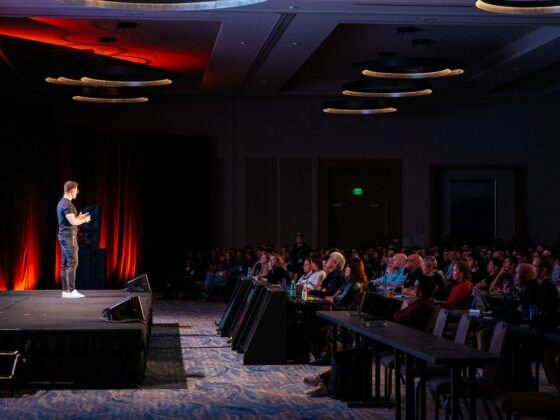
The Importance of a Strategic Approach
Maximizing profitability in the hotel industry requires more than a broad understanding of revenue management; it demands a strategic, step-by-step approach. Each stage builds upon the previous one, creating a solid foundation for the next level of sophistication in revenue management. This progression is vital because jumping ahead without mastering the basics can lead to suboptimal results and missed opportunities.
Mastering each step is crucial before moving on to the next. For instance, managing total revenue streams effectively can be overwhelming and ineffective without a solid grasp of room revenue analytics. Similarly, without the insights gained from room and total revenue management, it is challenging to accurately assess customer acquisition costs and profitability, which is essential for profit-oriented revenue management.
By following a structured approach, hotels can ensure that their revenue management strategies are data-driven and aligned with long-term profitability goals. The following sections will detail these steps, providing actionable insights and techniques to help your hotel reach new financial success levels.
Step 1: Room Revenue Management
Room revenue management is the strategic process of understanding and meeting the right customer’s needs with the right products at the right prices and channels at the right time. It is the foundation of a hotel’s overall management strategy, serving the guests who are the best fit for the hotel and optimizing availability and room pricing to maximize revenue.

This approach requires a deep understanding of market demand, customer behavior, and competitive dynamics. By carefully analyzing these factors, hotels can tailor their offerings to meet the needs of different customer segments and ensure that they sell their rooms in the most profitable manner possible.
Room revenue management is not just about filling rooms; it’s about filling them with the right guests at the right rates, ensuring that each booking contributes to the hotel’s overall profitability. This step is essential because it provides the analytical foundation for more advanced revenue management practices, such as total revenue management and profit-oriented strategies.
Critical Elements of Room Revenue Management
Data Collection and Integration
Accurate data collection from various sources is crucial for effective room revenue management. Hotels must gather data from Property Management Systems (PMS), Benchmarking, and Rate Shopping, among others. These systems provide valuable insights into booking patterns, occupancy trends, customer preferences, and competitor pricing.
Integrating this data into a cohesive system allows hotels to analyze their performance comprehensively. Understanding booking lead times from different channels helps optimize pricing and availability strategies. Accurate and timely data integration ensures that hotels can make informed decisions that align with current market conditions.
KPIs and Metrics
Tracking and analyzing key performance indicators (KPIs) is fundamental to room revenue management. The most critical and essential metrics include:
- Average Daily Rate (ADR): Represents the average revenue earned per occupied room. ADR helps gauge the effectiveness of pricing strategies.
- Revenue per Available Room (RevPAR): A core metric that combines ADR and occupancy rate to measure the overall revenue efficiency of a hotel.
- Occupancy Rate: Indicates the percentage of available rooms sold, providing insight into demand and market position.
Consistently monitoring these metrics enables hotels to identify trends, adjust pricing strategies, and optimize room availability to maximize revenue.
Pricing Strategies
Effective pricing strategies are central to room revenue management. These strategies include:
- Dynamic Pricing: Adjusting prices in real-time based on demand, competition, and market conditions. This ensures that room rates reflect the true value at any given time.
- Demand-Based Pricing: Hotels price rooms according to expected demand, such as higher rates during peak seasons or lower rates during off-peak periods.
- Length-of-Stay Pricing: Offering different rates based on a guest’s stay can help optimize room occupancy and revenue.
Analytics provides the insights needed to implement these strategies effectively, ensuring that hotels respond swiftly and strategically to market changes.
The Role of Technology in Room Revenue Management
Many outsourcing revenue companies and consultants have long relied on Excel models built over years of experience. While these models may have been effective in the past, they are no longer sufficient in today’s increasingly complex revenue management landscape. As the challenges of managing room revenue grow, hotels must transition to sophisticated Revenue Management Systems (RMS). These systems leverage advanced algorithms and real-time data, enabling more accurate and dynamic optimization of pricing and inventory decisions. By moving beyond manual, spreadsheet-based methods, hotels can significantly enhance their revenue management capabilities and stay competitive.
Revenue Management Systems (RMS)
Revenue management systems (RMS) are designed to automate the complex processes involved in room revenue management. These systems use advanced algorithms to analyze large datasets, forecast demand, and adjust real-time pricing, ensuring that hotels can capitalize on market opportunities. RMS can also factor in market competition, special events, and historical booking patterns to recommend optimal room rates.
Moving from manual methods to an RMS saves time. It reduces the risk of human error, allowing revenue managers to focus on strategic decisions rather than getting bogged down in data entry and analysis.
Business Intelligence (BI) and Revenue Analytics Tools
In addition to an RMS, hotels need a robust Business Intelligence (BI) or revenue analytics tool to track performance across all systems, including the RMS. A BI tool consolidates data from multiple sources, providing a holistic view of the hotel’s room revenue and a detailed analysis of segments, feeder markets, distribution channels, and many other variables. It enables revenue managers to monitor KPIs, track pricing strategies’ effectiveness, and identify areas for improvement.
These tools support data-driven decision-making by providing real-time insights critical for market competitiveness. By visualizing trends and forecasting future demand, BI tools help hotels make informed decisions that align with their overall revenue management strategy.
Benefits of Mastering Room Revenue Management
Mastering room revenue analytics delivers several significant benefits:
- Enhanced Decision-Making: Accurate data and well-defined KPIs enable hotels to make informed decisions that align with their revenue goals. This leads to more effective pricing and inventory management.
- Improved Pricing Strategies: With a solid analytical foundation, hotels can develop sophisticated pricing models that adapt to market conditions, maximizing revenue while maintaining competitive positioning.
- Increased Room Revenue: By optimizing room rates and occupancy, hotels can maximize their revenue potential, directly contributing to higher profitability.
Challenges and Solutions
While room revenue analytics offers clear benefits, hotels may encounter challenges such as:
- Data Overload: The vast amount of data available can be overwhelming. Investing in advanced analytics tools that automate data processing and highlight actionable insights can help manage this complexity.
- Skill Gaps: Effective revenue management requires specific expertise. Ongoing training and hiring specialized staff can address this challenge. Outsourcing companies and consultants can temporarily bridge the skill gap. If hotels outsource revenue management, they will never acquire the skills needed to capture the full room revenue potential, and it will be very difficult to move to the next step.
- Resistance to Change: Implementing new revenue management practices can meet resistance. Educating teams on the benefits of data-driven decision-making and how it positively impacts profitability can help overcome this hurdle.
By mastering room revenue analytics and leveraging the right technology, hotels establish a strong foundation for more advanced revenue management practices, setting the stage for increased profitability and long-term success.
Step 2: Total Revenue Management
Expanding Beyond Room Revenue
As the hospitality industry continues to evolve, the need to look beyond room revenue and embrace a more holistic approach to revenue management has become increasingly important. Total revenue management optimizes revenue across all hotel services, including Food & Beverage (F&B), spa, events, retail, and other revenue sources. This approach recognizes that every department contributes to the hotel’s overall financial performance and that maximizing revenue from each service can significantly enhance profitability.
Integrating all revenue streams into a cohesive strategy gives hotels a comprehensive view of their overall performance. By managing these diverse revenue sources collectively, hotels can identify synergies between departments, capitalize on cross-selling opportunities, and ensure that every aspect of the guest experience is optimized for revenue generation.
Critical Elements of Total Revenue Management
Data Integration Across Departments
A key challenge in total revenue management is consolidating data from various departments into a unified system for analysis. Each department—whether F&B, spa, events, or retail—typically operates with its own data set, systems, and processes. Integrating these disparate data sources into a single platform is essential for a holistic view of the hotel’s revenue performance.
By bringing together data from all revenue-generating areas, hotels can perform comprehensive analyses that reveal trends and opportunities that may be missed when departments operate in silos. For example, understanding the relationship between room occupancy and F&B spending can lead to targeted promotions that drive higher overall revenue.
To achieve effective data integration, hotels should invest in systems that allow seamless communication and data sharing between departments. This not only enhances data accuracy but also enables real-time analysis and decision-making.
Cross-Departmental Collaboration
Total revenue management requires close collaboration between all departments within the hotel. Revenue management is no longer the sole responsibility of the rooms division; it involves the concerted effort of sales, marketing, F&B, spa, and events teams, among others.
Collaboration is crucial because each department influences the guest experience and contributes to overall revenue. For instance, the marketing team must work closely with the F&B department to create promotions that drive restaurant bookings. In contrast, the sales team must align with the events department to optimize group bookings and conferences.
Establishing regular inter-departmental meetings and using collaborative tools can foster better communication and alignment, ensuring that all teams work towards maximizing total revenue.
Comprehensive KPI Tracking
As with room revenue management, tracking the right KPIs is essential for effective total revenue management. However, the scope of KPIs expands beyond the traditional metrics of ADR, RevPAR, and occupancy rate to include indicators relevant to other revenue streams. Most key metrics still focus on maximizing capacity utilization.
- Revenue per Available Seat Hour (RevPASH) for F&B measures the revenue generated per seat per hour, helping to optimize restaurant operations and seating arrangements.
- Revenue per Available Treatment Hour (RevPATH) for Spa Services: Tracks the revenue generated per treatment hour, aiding in the efficient scheduling of staff and treatments.
- Revenue per Available Space (RevPAS) for Events: Monitors revenue generated per square meter of event space, guiding pricing and utilization strategies.
By consistently tracking these KPIs, hotels can gain insights into the performance of each revenue stream, identify underperforming areas, and adjust strategies to maximize overall revenue.
Revenue Management Strategies Across Services
Each department within a hotel requires tailored revenue management strategies to optimize its specific revenue streams. For example:
- F&B: Implement dynamic menu pricing based on demand patterns (e.g., raising prices during peak dining hours or offering discounts during slower periods). Consider menu engineering to highlight high-margin items.
- Spa: Optimize scheduling to maximize treatment hours, offer bundled packages to increase the average transaction value, and adjust pricing based on peak and off-peak times.
- Events: Implement flexible pricing strategies for event spaces, consider tiered pricing based on event size and seasonality, and explore upselling opportunities for additional services such as catering and audio-visual equipment.
Analytics are vital in guiding these strategies by providing the data needed to understand demand, forecast revenue, and make informed pricing decisions across all services.
The Role of Technology in Total Revenue Management
Technology is a critical enabler of total revenue management, providing the tools needed to integrate data, analyze performance, and execute revenue strategies across multiple departments.
Integrated Property Management Systems (PMS)
A modern PMS that integrates all revenue sources is essential for total revenue management. The PMS consolidates data from all revenue-generating departments, providing a single source of truth for revenue analytics. An integrated PMS can seamlessly connect with other systems, such as restaurant point-of-sale (POS) systems, spa management software, and event management tools, ensuring data flows smoothly across departments.
With a PMS integrated with all other revenue transactional systems, revenue managers can easily access real-time data from all areas of the hotel, enabling them to make informed decisions that optimize overall revenue.
Advanced Business Intelligence (BI) Tools
BI tools are indispensable for total revenue management. These tools aggregate data from multiple sources, including the PMS and other departmental systems, to provide comprehensive dashboards and reports. BI tools allow revenue managers to track performance across all revenue streams, identify trends, and uncover insights that inform strategic decisions.
BI tools help hotels visualize data in an accessible format, understand the impact of their revenue management strategies, and make adjustments in real-time.
Revenue Management Systems (RMS) for Ancillary Services
While RMS is commonly used for room revenue management, hotels increasingly adopt RMS solutions tailored for other services, such as F&B and events. These systems use advanced algorithms to forecast demand, optimize pricing, and manage inventory for non-room services, ensuring that revenue opportunities are maximized across the entire property.
By applying RMS technology to ancillary services, hotels can achieve the same revenue optimization traditionally reserved for rooms, leading to a more balanced and profitable revenue strategy.
Challenges and Solutions in Total Revenue Management
Transitioning from a focus on room revenue to total revenue management presents several challenges:
- Data Silos: Departments often operate independently, leading to fragmented data and missed opportunities for cross-departmental insights. Solution: Invest in integrated systems that enable data sharing and real-time collaboration across departments.
- Cultural Shift: Moving to a total revenue approach requires a cultural shift within the organization, as all departments must align with the overarching revenue management strategy. Solution: Provide training and incentives that encourage departments to collaborate and focus on the overall revenue goals.
- Complexity in Tracking and Analysis: With multiple revenue streams, tracking performance and making decisions becomes more complex. Solution: Leverage advanced BI and analytics tools that can consolidate data from various sources and provide actionable insights in a user-friendly format.
Benefits of Mastering Total Revenue Management
Mastering total revenue analytics offers significant advantages:
- Comprehensive Revenue Understanding: By integrating and analyzing all revenue streams, hotels gain a complete picture of their financial performance, allowing for more informed strategic decisions.
- Increased Profitability: Optimizing revenue across all services, rather than just focusing on rooms, can substantially increase overall profitability. This holistic approach ensures that every aspect of the hotel contributes effectively to the bottom line.
- Enhanced Guest Experience: By understanding the interplay between different services, hotels can create more cohesive and personalized guest experiences, leading to higher guest satisfaction and increased revenue through repeat business and positive reviews.
By adopting a total revenue management approach and leveraging the right technology, hotels can unlock new revenue opportunities, improve operational efficiency, and achieve sustainable profitability in an increasingly competitive market.
Step 3: Profit-Oriented Revenue Management
Profit-oriented revenue management is the most advanced stage of revenue management, where the focus shifts from merely generating revenue to maximizing profitability. This step involves a comprehensive analysis of both revenue and costs to optimize the hotel’s net revenue. Unlike previous stages, where the emphasis was primarily on increasing revenue across various departments, profit-oriented revenue management delves deeper into understanding the costs associated with generating that revenue, particularly the costs related to acquiring and serving customers.
At this stage, two critical concepts come into play: Customer Acquisition Cost (CAC) and Customer Profitability Analysis. By carefully analyzing these factors, hotels can identify their most profitable customer segments and optimize their strategies to attract and retain these high-value guests. This approach ensures that every dollar spent on customer acquisition and service delivery contributes positively to the hotel’s bottom line.
Key Elements of Profit-Oriented Revenue Management
Customer Acquisition Cost Analysis
Customer Acquisition Cost (CAC) is a vital metric that measures the total cost of acquiring a customer. This includes marketing expenses, sales efforts, commissions, and other costs of bringing a customer to the hotel. Understanding CAC is crucial because it directly impacts the hotel’s profitability.
Hotels should consolidate data from various marketing and sales channels to track and analyze CAC. This allows them to calculate the average cost per customer acquisition for different segments, campaigns, or distribution channels. For example, the cost of acquiring a guest through direct booking on the hotel’s website might differ significantly from that of acquiring a guest through an Online Travel Agency (OTA).
By analyzing CAC, hotels can determine which customer acquisition methods are most cost-effective and adjust their marketing strategies accordingly. This analysis also helps identify opportunities to reduce acquisition costs while maintaining or improving guest volume.
Customer Profitability Analysis
Customer Profitability Analysis goes beyond just looking at revenue; it considers the costs associated with serving different customer segments to determine their profitability. This analysis involves comparing the revenue generated by each customer or segment against the costs incurred to serve them, including CAC, operational costs, and other related expenses.
Through this analysis, hotels can identify which customer segments are the most profitable and which are less so. For instance, a high-spending guest who frequently uses hotel amenities like the spa or restaurants might be more profitable than one who only stays in the room and books at a heavily discounted rate. Hotels can tailor their marketing and service delivery efforts by focusing on these high-profit customers to attract and retain these valuable segments.
Net Revenue Optimization
Net revenue, the revenue remaining after deducting customer acquisition costs, is an accurate measure of a hotel’s revenue-generating capabilities. In profit-oriented revenue management, the focus is on maximizing this net revenue rather than just increasing gross revenue. This means paying close attention to both revenue generation and cost control.
Strategies for optimizing net revenue include targeting high-profit customer segments, reducing unnecessary expenses, and streamlining operations. For example, if analysis shows that a particular segment of customers brings in high revenue but also incurs high costs, the hotel might consider ways to reduce service delivery costs or find more cost-effective ways to attract similar guests.
Additionally, hotels can optimize their pricing strategies to balance revenue with cost efficiency. Offering package deals that bundle high-margin services like spa treatments or dining experiences can increase the overall profitability of each booking.
The Role of Technology in Profit-Oriented Revenue Management
Technology plays a crucial role in enabling profit-oriented revenue management. Advanced analytics tools and systems are essential for collecting, analyzing, and interpreting the vast amounts of data needed to perform accurate cost and profitability analyses.
Customer Relationship Management (CRM) Systems
If the hotel has an inferior PMS that cannot store guest data, it needs a CRM system to help it track detailed information about its guests, including booking history, preferences, spending patterns, and feedback. By integrating CRM data with financial and operational data, hotels can gain deep insights into customer profitability and tailor their offerings to maximize net revenue from each guest.
Advanced Analytics and BI Tools
To accurately analyze CAC and customer profitability, hotels need sophisticated analytics tools to process large datasets and provide actionable insights. These tools can help segment customers, calculate acquisition costs, and analyze each segment’s profitability in real-time. BI tools also enable hotels to monitor net revenue and other critical metrics across different departments, ensuring they are on track to meet their profitability goals.
Challenges and Solutions in Profit-Oriented Revenue Management
Transitioning to profit-oriented revenue management can present several challenges:
- Complexity of Data Analysis: Analyzing revenue, costs, and profitability across different customer segments and services can be complex. Solution: Invest in advanced analytics tools and ensure staff are trained to use them effectively. Automating data collection and analysis can also reduce complexity and increase accuracy.
- Resistance to Change: Shifting focus from revenue to profitability may require organizational culture and strategy changes. Solution: Foster a data-driven culture by demonstrating the financial benefits of profit-oriented management and providing training to help staff adapt to new tools and processes.
- Integration of Systems: Ensuring that all relevant systems (PMS, RMS, CRM, financial management) are integrated and working together can be challenging. Solution: Work with technology providers to ensure seamless integration and invest in systems that work together.
Benefits of Mastering Profit-Oriented Revenue Management
Mastering profit-oriented revenue analytics offers significant benefits:
- Increased Profitability: By focusing on net revenue and customer profitability, hotels can achieve significantly higher profit margins than those focusing only on gross revenue.
- Better Resource Allocation: Understanding the cost of acquiring and serving customers allows hotels to allocate resources more efficiently, reducing waste and maximizing returns.
- Enhanced Competitive Advantage: Hotels that successfully implement profit-oriented revenue management are better positioned to compete in the market, as they can offer more competitive pricing while maintaining strong profitability.
For example, a hotel that reduces its CAC by optimizing its marketing spend and focusing on attracting high-profit customers could see a significant increase in net revenue, even if gross revenue remains constant. Focusing on profitability over mere revenue growth ensures long-term financial health and sustainability.
By mastering profit-oriented revenue analytics, hotels can unlock new levels of profitability and secure a stronger position in their market.
Conclusion
Recap of the Three Steps
In your journey toward profit-oriented revenue management, the process involves mastering three critical steps:
- Room Revenue Management: This is where you build a solid foundation by optimizing room pricing, occupancy, and RevPAR. Mastering this step allows for informed, data-driven decisions that set the stage for advanced revenue strategies.
- Total Revenue Management: Once room revenue management is in place, expand your focus to include all revenue streams within the hotel, such as F&B, spa, and events. Integrating all these streams gives you a comprehensive view of your hotel’s overall performance, unlocking new opportunities to enhance revenue across departments.
- Profit-Oriented Revenue Management: The final and most advanced stage involves a shift from simply generating revenue to maximizing profitability. This means analyzing revenue and costs, focusing on net revenue, and identifying the most profitable customer segments. Mastering this step ensures that every aspect of your operations contributes effectively to your bottom line.
Encouragement to Take Action
Now that you have a clear roadmap, it’s time to take action. Start by assessing your current stage in the revenue management journey and use the detailed checklists provided as your guide. Each checklist is designed to help you build the necessary foundation before moving on to the next step. Remember, each step is crucial and should be approached with careful planning and execution.
Take the first step
Start working with the checklists today. They are your roadmap to success in revenue management. Each step is a giant leap forward, and when done right, it will dramatically increase your hotel’s profitability. Don’t rush—take it one step at a time. Ensuring that each stage is thoroughly mastered before moving on will set your hotel up for sustained success and financial growth.
Final Piece of Advice
One step at a time. Revenue management is a journey, not a sprint. By carefully implementing each stage, you’ll build a stronger foundation for your hotel’s financial future. Each step, when appropriately executed, is a powerful driver of profitability. Stay focused, be diligent, and watch as your efforts significantly improve your hotel’s bottom line.
Checklists: What Hotels Need to Complete Before Moving to the Next Step
Before Moving to Step 1: Room Revenue Management
The initial focus for hotels still developing their revenue management capabilities should be building a solid foundation in room revenue management. This involves understanding the basics of revenue management, setting up the right systems, and ensuring that the data collection processes are accurate and consistent.
1. Understand the Basics of Revenue Management
- Training and Education: Equip your revenue management team and key stakeholders with a strong understanding of revenue management principles, including pricing strategies, demand forecasting, and market segmentation.
- Awareness of Industry Best Practices: Ensure your team is familiar with the best practices in hotel revenue management through training, workshops, or consulting with industry experts.
2. Data Collection and Integration
- PMS Setup: Your PMS should be configured to capture all relevant booking and revenue data efficiently and accurately.
- Channel Management: Integrate data from all booking channels, including CRS, OTA, and direct bookings, into your PMS to maintain a comprehensive view of revenue activities.
- Accurate Data Collection: Implement strong data governance policies to maintain data accuracy and consistency across all systems.
3. Define and Track Key Performance Indicators (KPIs)
- Identify Key Metrics: Establish critical KPIs for room revenue management, such as ADR (Average Daily Rate), RevPAR (Revenue per Available Room), and occupancy rate.
- Set Baseline Performance: Analyze historical data to establish baseline performance levels for these KPIs, which will serve as a benchmark for future performance.
- Regular Monitoring: Develop a process for regularly monitoring these KPIs, using dashboards or reports to provide real-time insights.
4. Implement Basic Pricing Strategies
- Static Pricing Review: If your hotel uses static pricing, review and adjust these rates based on market demand and competitor pricing.
- Introduce Dynamic Pricing: Begin using dynamic pricing models to adjust rates in real time according to demand and competitor behavior.
- Seasonal Adjustments: Develop pricing strategies that account for seasonal demand fluctuations, local events, and other market factors.
5. Invest in Technology
- Property Management System (PMS): Ensure your PMS can support modern revenue management needs, including data integration and real-time updates.
- Revenue Management System (RMS): Implement an RMS to automate and optimize pricing and inventory management.
- Business Intelligence (BI) Tools: Invest in BI tools that consolidate data from multiple sources and provide actionable insights to guide your revenue strategies.
6. Develop a Data-Driven Culture
- Encourage Data Literacy: Train your team to understand and utilize data effectively in decision-making processes.
- Foster Collaboration: Promote cross-departmental collaboration to align revenue management goals with the broader hotel strategy.
- Establish Reporting Processes: Create regular reporting systems to inform all stakeholders of critical metrics and trends.
Before Moving to Step 2: Total Revenue Management
Moving to the next step will likely take your hotel at least a year. Once your hotel has established a solid foundation in room revenue management, the next phase is to broaden your focus to encompass all revenue streams across the hotel. This involves integrating data from various departments, aligning strategies throughout the hotel, and adopting more advanced technology solutions to manage and optimize these diverse revenue sources effectively.
1. Data Mastery
- Accurate Data Collection and Integration: Ensure your hotel accurately collects and integrates data from all systems, including PMS, CRS, OTA, and other relevant platforms. This integration is crucial for having a unified view of your room revenue performance.
- Unified Data Platform: Implement a system that allows seamless data integration across all channels and departments to ensure consistency and accuracy in revenue reporting.
2. KPI Tracking
- Consistent KPI Tracking: Continue tracking room-related KPIs such as ADR, RevPAR, and occupancy rate, ensuring that these metrics are consistently monitored and analyzed to inform decision-making.
- Baseline and Performance Monitoring: Regularly compare current performance against established baselines to identify trends and areas for improvement.
3. Pricing Strategy Optimization
- Dynamic and Demand-Based Pricing Strategies: Implement sophisticated pricing strategies supported by data analytics. This includes dynamic pricing adjustments based on real-time demand, market trends, and competitor actions.
- Cross-Departmental Collaboration: Work closely with other departments to ensure pricing strategies align with the overall hotel strategy, optimizing revenue across all channels.
4. Technology Implementation
- Transition to Sophisticated Systems: Move from manual, Excel-based models to advanced RMS and BI tools that can handle the complexity of total revenue management. This transition is crucial for improving the accuracy and efficiency of your revenue management processes.
- Integrated Technology Solutions: Ensure that all technology systems, including PMS and RMS, are integrated to provide a comprehensive view of the hotel’s revenue performance.
Before Moving to Step 3: Profit-Oriented Revenue Management
After successfully managing total revenue across all hotel revenue sources for at least a year, the final stage focuses on profitability. This involves analyzing revenue and costs to optimize net revenue and customer profitability.
1. Cross-Departmental Data Integration
- Seamless Data Integration: Ensure that data from all revenue-generating departments (F&B, spa, events, etc.) is integrated into a unified system for analysis. This integration is critical for a holistic view of the hotel’s financial performance.
- Unified Systems Platform: Invest in technology that allows seamless data flow between departments, ensuring that all revenue streams are accurately tracked and analyzed.
2. Collaborative Culture
- Regular Communication and Collaboration: Establish regular communication and collaboration between departments to align with total revenue management goals. This collaboration ensures that all departments are working towards the same profitability objectives.
- Shared Revenue Goals: Develop goals and incentives that encourage departments to work together to maximize total revenue and profitability.
3. KPI Expansion
- Comprehensive KPI Tracking: Expand your KPI tracking to include metrics relevant to all services, such as RevPASH (Revenue per Available Seat Hour) for F&B, RevPATH (Revenue per Available Treatment Hour) for spa services, and RevPAS (Revenue per Available Space) for events.
- Performance Analysis Across Departments: Regularly analyze these KPIs to ensure each department contributes effectively to the hotel’s overall revenue goals.
4. Departmental Revenue Strategies
- Tailored Revenue Strategies: Implement customized revenue management strategies for each department, using data analytics to guide decisions and optimize performance.
- Coordination Between Departments: Ensure these strategies are coordinated across departments to maximize the overall impact on hotel revenue.
5. Advanced Technology Adoption
- Integrated Systems: Ensure that all relevant systems (PMS, RMS, CRM, BI tools) are integrated and support total revenue management, providing a comprehensive view of the hotel’s performance.
- Technology for Profitability Analysis: Leverage advanced technology to analyze profitability at a granular level, helping to identify and focus on high-profit customer segments.
Before Mastering Profit-Oriented Revenue Management
Finally, to truly master profit-oriented revenue analytics, hotels must optimize net revenue and understand each customer segment’s total profitability. This involves a detailed analysis of costs, customer acquisition strategies, and the implementation of advanced technology to support decision-making.
1. CAC Analysis
- Track and Analyze Customer Acquisition Cost: Accurately track and analyze CAC across all channels and segments to understand the actual cost of acquiring each customer. This analysis helps identify the most cost-effective channels and strategies.
- Optimize Acquisition Strategies: Use CAC data to refine and optimize your marketing and sales strategies, focusing on channels that deliver high-value customers at a lower cost.
2. Customer Profitability
- Conduct Customer Profitability Analysis: Analyze the revenue versus costs associated with different customer segments to identify your most profitable customers.
- Focus on High-Profit Segments: Develop targeted strategies to attract and retain these high-profit customers, ensuring that marketing and service efforts are aligned with profitability goals.
3. Net Revenue Focus
- Shift Focus from Gross to Net Revenue: Transition your revenue management focus from gross to net revenue, emphasizing cost control and maximizing profitability.
- Implement Cost Optimization Strategies: Explore ways to reduce costs without compromising the guest experience, such as optimizing the guest experience delivery.
4. Technology for Profitability
- Leverage Advanced Analytics: Utilize advanced analytics tools to gain insights into customer behavior, profitability, and cost management. These tools are essential for making informed, profit-oriented decisions.
- Integrated Financial Management Tools: Ensure that your financial management systems are integrated with revenue analytics to provide a comprehensive view of the hotel’s profitability.
5. Data-Driven Culture
- Develop a Culture Focused on Profitability: Train your staff to prioritize profitability in their decision-making processes, ensuring everyone understands the importance of managing revenue and costs.
- Ongoing Training and Support: Provide continuous training and support to ensure your team can analyze data effectively and make decisions that drive profitability.
These detailed checklists provide a comprehensive guide for hotels at each stage of the journey toward profit-oriented revenue management, ensuring they are fully prepared before advancing to the next level. Following these steps, hotels can optimize revenue strategies, enhance profitability, and secure long-term success in a competitive market.







